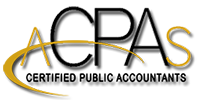There are various methods for valuing entities. Selecting the best methods depends on the purpose of the valuation and nature of the entity.
Most common business valuation methods:
Going-Concern Value
The going-concern value is often used in conjunction with other valuation methods. Basically measures the value of an entity as an operating entity (going-concern). Often used in conjunction with other approaches in order to determine the entities goodwill value.
Market Comparison Approach
Compares the market value of the entity with that of similar entities. This method is difficult in practice since there is little tangible yardstick for measurement. You are dealing with entities net worth, size, location, market differences, and other unique features of entities.
Replacement Value Approach
Measures value by determining what it would cost today to replace the entity’s components (assets and infrastructures used by the entity).
Future Net Operating Income Approach
Uses the present value of reasonable future net operating income. Involves many assumptions for future earnings, expenses, and reasonable rate at which net earnings are discounted to a present value.
Historical Net Operating Income Approach
Uses several actual prior year net incomes of the entity and capitalizes them into a dollar value. Untypical events causing higher or lower net income are reviewed and adjusted accordingly.
Liquidation Approach
This method assumes the entity ceases to exist and sells its assets for equivalent fair market value.
Formula Approach
Earnings, dividends, and book value are weighted in accordance to their appropriateness to the particular entity and their importance to the acquirer.
Capitalization of Dividends Approach
This valuation approach is unique in that it looks upon an entity acquisition like an investment security that will be held indefinitely.
Debt-Free Approach
The debt-free approach assumes all existing entity debt is paid off. Thus the entity’s net worth is valued without any debt.
Reconstructed Capital Structure Approach
Similarly to the Debt-Free Approach, this methodology allows a prospective purchaser to see what an entity would be worth with different capital and debt structures.
Capitalization of Future Cash Flow Approach
Used when the entity has large non-cash deductions from income and when the valuation focuses on the entity’s long-term growth potential.
Capitalization of Historical Cash Flow Approach
Assumes that the entity’s financial future reflects the past performance. Actual cash flows over the most recent years are capitalized.
Adjusted Book Value Approach
Adjusted book value begins with the entity’s most recent financial statement and the assets and liabilities are adjusted to reflect current values rather than traditional balance sheet historical values.
Tax Value Approach
This method relies on upon the assessed values of real and personal property of other similar properties than you would otherwise consider. Generally real and personal property is part of an entity and usually not valued separately. However there are circumstances where an entity has significant real and personal property that has a significant market value and can be sold separately without negatively impacting the remaining operations of the entity.
